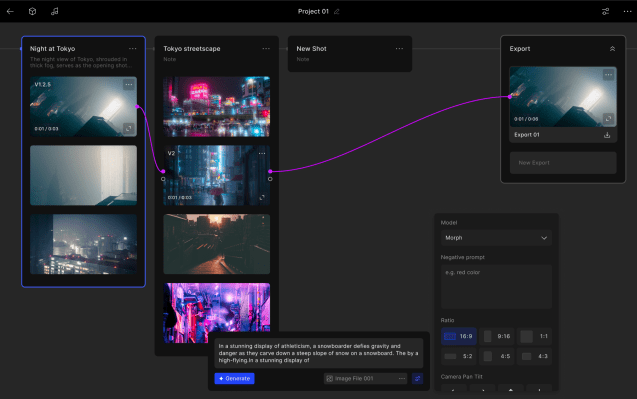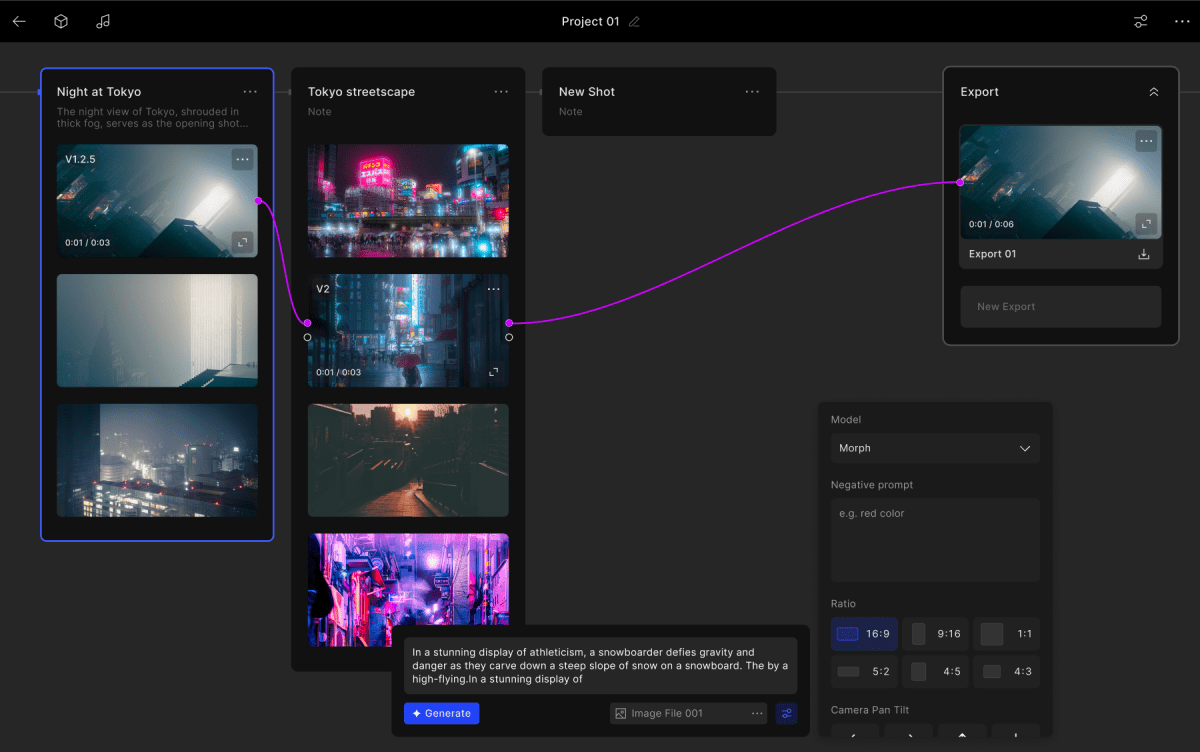
Want to weave various Stability AI–generated video clips into a movie? Now there’s a tool for that.
Morph Studio, which has its own text-to-video model, just introduced an AI filmmaking platform. The eponymous tool takes the form of a storyboard, where users can create and edit shots by entering text prompts for different scenes and combine them into a cohesive narrative.
Undergirding the creation process is Morph’s partnership with Stability AI, though eventually, Morph plans to introduce an array of generative video models for users to choose from. Morph calls the process of generating, editing and cross-cutting a “workflow.” Users can share their unique production workflow in Morph’s creator community where others can replicate and modify the templates simply by changing the AI prompts.
“Filming, editing and post-production used to be separate steps in traditional filmmaking, but AI blurs the boundaries of these stages and turns them into one continuous process. If you aren’t happy with a shot, you can re-generate it on our canvas. AI has introduced a new workflow to film production,” Morph’s co-founder Xu Huaizhe said in an interview with TechCrunch.
Xu is among a team of computer vision PhD dropouts from the Hong Kong University of Science and Technology who founded Morph Studio in 2023. He sees CapCut, ByteDance’s popular video editing app that’s also AI-fueled, as a potential competitor to Morph and he wants to ensure that his startup isn’t “easily replaceable by another ByteDance app.”
Morph’s moat, according to Xu, will hinge on its ability to build a vibrant user community. “Community is hard to replace,” the founder suggested. In terms of technological moats, Xu said Morph has made great efforts to fine-tune the model to “better suit creators’ needs.”
Today, Morph employs around 10 people and has so far raised $2.5 million in funding from Baidu Ventures.
Meme generating
Xu’s commitment to creating a community around videos was evident in Morph’s inaugural product endeavor: a place for sharing AI-generated memes. The startup set out with a mission to work on high-definition videos, but to explore use cases, it first fine-tuned a model for making GIFs from text prompts.
“Young people communicate and consume news through memes these days,” Xu said. “There are lots of image-based communities, like Reddit and 9Gag, but until now, there hasn’t been a video-based online community.”
That observation prompted Xu to create a Telegram group where people were only allowed to “talk” through GIFs. The group grew to 300 members within days, with users posting GIFs featuring the likes of Elon Musk donning a spacesuit or Donald Trump disco dancing, all generated with Morph’s AI model. A similar Discord channel launched later. These days, Morph is focusing its resources on improving the film production platform.
“We found that people don’t really care if the GIFs look a bit fake. They like it that they can tell it’s AI-generated,” said Xu. “People are using memes to convey greater meanings than they can do through words.”



![[CITYPNG.COM]White Google Play PlayStore Logo – 1500×1500](https://startupnews.fyi/wp-content/uploads/2025/08/CITYPNG.COMWhite-Google-Play-PlayStore-Logo-1500x1500-1-630x630.png)